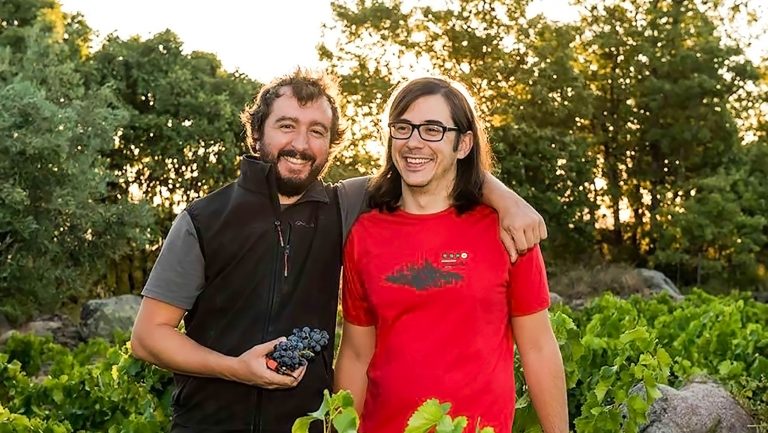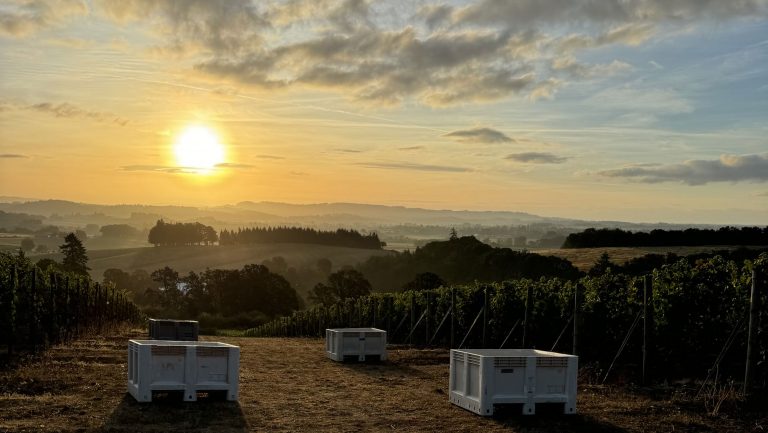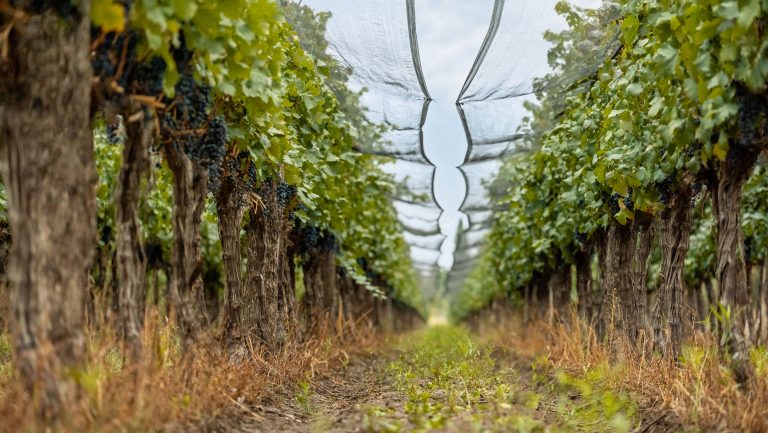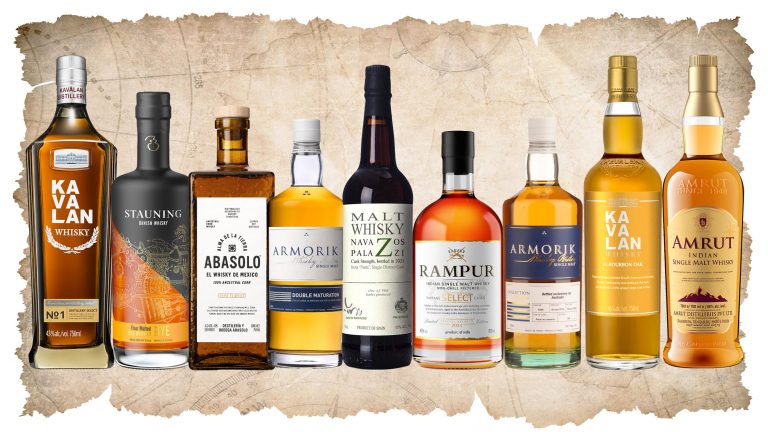“This is a chord, this is another, this is a third. Now form a band” was how Sideburns fanzine famously encapsulated punk spirit in January 1977. Today, while the medium is different, a similar ‘do-it-yourself’ attitude pervades Spain’s rediscovered wine regions. From the wild hinterlands of Tenerife and Ribeira Sacra to here, high in the Gredos Mountains west of Madrid, tenacious dreamers like Daniel Gómez Jiménez-Landi and Fernando Garcia of Comando G have avoided prohibitive set up costs reviving unwanted parcels of indigenous old-vines. Their trajectory may be more “This is a bottle of Château Rayas, this is another, this is a third. Now form a winery,” but such democratization has resulted in some the freshest vinous finds of recent years.
“Spain has had the potential for great wine since Roman times, but we haven’t always had the sensibility or ability to express it,” says Daniel at La Fiesta de la Floración, a bi-yearly tasting and live music celebration the duo organize for friends in the Sierra de Gredos. “Now it’s developed into a revolution with the focus on local varieties and expressing the landscape. The older generation, people like Alvaro Palacias, Telmo Rodriguez and Peter Sisseck, were the first to open the door for Spain in other countries, and now others with similar philosophies are following them.” If not long ago the blueprint for fine Spanish wine was a one-size-fits-all recipe fetishizing new oak, deep colors and high alcohol, things have become more nuanced. “The idea was the more expensive the wine the more expensive the barrel, but now it’s the opposite,” says Fernando. “You have to work Garnacha as Garnacha asks, whereas in the past we worked all grape varieties as Tempranillo.”
Squint at the vibrant hues of the Sierra de Gredos in Spring and you can mistake it for Wales, broken by a smattering of faded towns whose best days seem long ago. In this part of Spain, Garnacha—AKA Grenache—has long been king. Originally a center for bulk-wine production, this impoverished central region grows just 10 percent of its 1950s to 1970s heyday, when co-operatives harvested over a million kilograms of grapes a year. Overproduction, EU laws and high farming costs (due to the steep terrain) eventually made the industry unsustainable, forcing the mass migration of workers into the cities in search of better paid jobs. Only an hour drive from Madrid, abundant abandoned bush vines grow among fig and olive trees at high altitude, like lost treasure waiting to be discovered. With big diurnal day to night temperature swings producing intense, well balanced fruit, and having missed the chemical abuses of the 1980s, there are few better places for two winemakers citing the world’s greatest Grenache—Château Rayas—as their inspiration, to set up their own domaine. Singular wines of extraordinary grace, that Comando G have already harnessed a similarly understated sensibility is testament to the estate’s potential.

Don’t miss the latest drinks industry news and insights. Sign up for our award-winning newsletters and get insider intel, resources, and trends delivered to your inbox every week.
“Château Rayas gives you a unique feeling when you drink it. We fell in love with its finesse and delicate balance,” says Fernando. “Visiting the estate became a pilgrimage for us,” Daniel continues. “We used to go there every year to walk around the vineyards and think about the wine, sleeping in our van in the middle of the fields. After many years of going, last year we had the opportunity to go inside and meet Emmanuel Reynaud, the owner. As he took us on a tour of the vineyards he pointed out its features; we kept nodding along thinking, “Yes, we know!”
Producing six bio-dynamic cuvées—five reds from 100 percent Garnacha and a white, ‘El Tamboril’, from Garnacha Gris and Garnacha Blanco—Comando G structure their portfolio around Burgundy’s hierarchical Cru system. Farmed in obscure granite and sandstone parcels that the boys meticulously bought by gaining the trust of locals, the range goes from “village” ‘La Bruja de Rozas’ and ’Rozas 1er Cru’, to three “Grand Cru” single vineyards: ‘Tumba del Rey Moro’, ‘Las Umbrias’ and ‘Rumbo al Norte’, where vines grow among huge boulders that look like they’ve been carelessly discarded by giants. What I love about these wines is their balance between generosity and restraint: relatively light in color, the house style teases delicate perfumes of flowers, rocks and minerals around pure fruit cores. The silky and finessed 2016 ’Rozas 1er Cru’ has been one of my favourite wines of the summer; at around half the price of the “Grand Crus” it’s the range’s sweet spot, lacking none of their deliciousness at this early stage. Like long-established Château Rayas and Domaine Gramenon in Southern France, and younger contemporaries such as Eben Sadie in South Africa and Tribute to Grace in California, these Grenaches are world-class thoroughbreds, rather than the low-rent work horses of bulk wine.
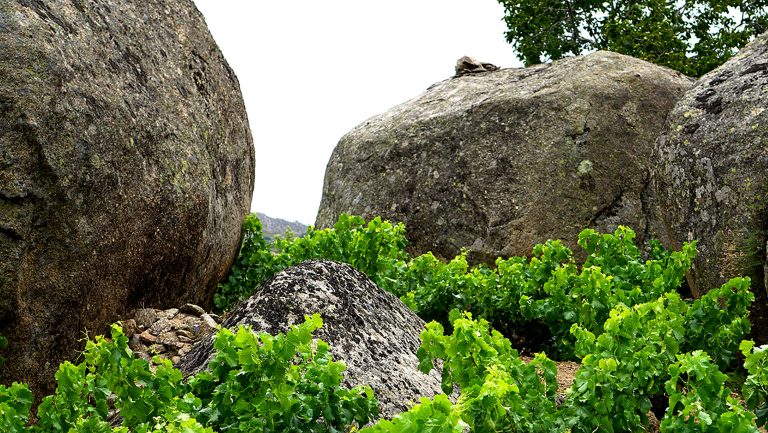
Growing up on his family estate in Gredos (which he left due to a disagreement over cultivating international varietals), Daniel also produces wines under his eponymous Daniel Gómez Jiménez-Landi imprint, while Fernando worked for Telmo Rodriguez, Raul Perez and Madrid wine shop Lavinia, before setting up Bodega Marañones, where he still makes wine. Launching Comando G in 2008 with Marc Isart, a third partner who since has left, the estate became Daniel and Fernando’s priority in 2013 as it began to garner international attention. The name Comando G is a reference to ’80s Japanese cartoon Battle of the Planets, which as part of their passion for alternative pop culture lies at the heart of what they do.
As a region, Sierra de Gredos is made up of three valleys with different climates: continental in the northern Alto Alberche, and Mediterranean in the southern Alberche and Tiétar. However, the Spanish appellation system has not developed to reflect such distinctions, using the generic ‘Viños de Madrid’ to define all three zones. Comando G prefer using the unofficial but more specific ‘Sierra de Gredos’, printing other vineyard information on their labels outside of the recognised DO and its rules. Elsewhere, interesting local producers such as Bernabeleva, Rubor, Daniel Ramos and Pegaso project are helping to draw attention to the region. “We need more wineries here to make the area better known,” says Fernando. “We love regions like Burgundy and Rioja, where you smell wine everywhere.”
At La Fiesta de la Floración the morning tasting is winding down for lunch. Everywhere you look are the great and the good of new wave artisanal wine, from Telmo Rodriguez chatting with Portugal’s Dirk Niepoort, to Envinate—Spain’s other hottest new project—pouring their new vintage for Meursault’s Jean-Marc Roulot and California’s Rajat Parr. If everyone here has something in common it’s a love of balanced wines with a sense of place, rather than bombastic concentration. Later in the afternoon Daniel and his band take to the stage and rock out to Led Zeppelin and Rolling Stones covers, but for now everyone follows the aroma of Pulpo a la Gallega being served under a canopy of olive trees.
“The reason we’re able to make our wines is because Sherry and Rioja have historically done such an amazing job,” Fernando says, as bottles are uncorked and the celebration gets into full swing. “Not long ago, a region with old vineyards and local varieties appeared every year. Suddenly there were the Canary Islands, or Ribeira Sacra, or Ribeira del Douro, or the Gredos Mounatins; many different kinds of grape varieties and soils.” Spanish wine is undoubtedly in a magical moment. Having weathered the homogenization of the ‘80s, when winemakers, previously isolated under the Franco regime attempted to play catch up by planting international varieties, the new generation is able to take advantage of stocks of characterful indigenous vines in regions that time seemingly forgot. With fewer barriers to entry, and an irreverent D.I.Y attitude, could that be the whiff of punk spirit in the air? “Spain is like a castle that has been closed for many years,” says Daniel. “We’re opening the doors and windows, and the world is discovering what treasures the castle has inside.”
– Written by Dan Keeling
Additional Noble Rot articles:
- Generation Burgundy by Dan Keeling
- Mike D from the Beastie Boys by Noble Rot
- Noble Rot publishes 3 magazines a year. Subscribe to Noble Rot via its online store.

Dispatch
Sign up for our award-winning newsletter
Don’t miss the latest drinks industry news and insights—delivered to your inbox every week.
Noble Rot is the home of exciting writing about wine and food. Since its launch in 2013, the magazine has featured chefs Pierre Koffmann, Fergus Henderson, and Yotam Ottolenghi, along with Keira Knightley, Mark Ronson, Brian Eno, Mike D, and Francis Ford Coppola, and blurred the boundaries between gastronomy and the creative arts. Noble Rot was founded by Dan Keeling, the Louis Roederer Food & Wine Writer of the Year 2017 and 2018, and Mark Andrew, a Master of Wine. The magazine, based in London, is published every four months.


